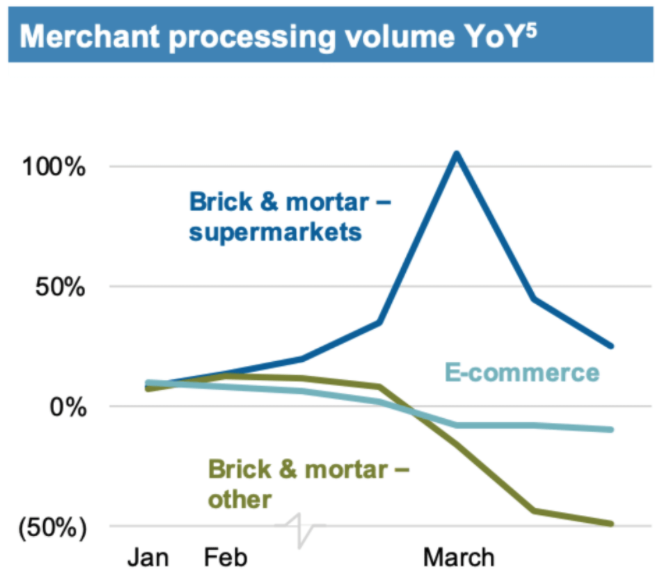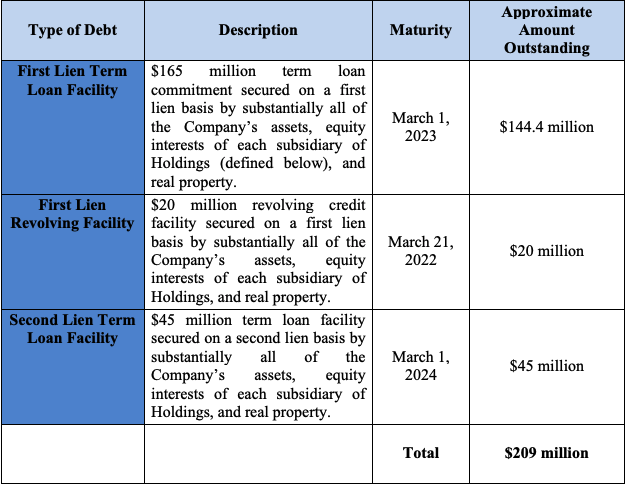🚗 New Chapter 11 Bankruptcy Filing - Techniplas LLC 🚗
Techniplas LLC
May 6, 2020
Wisconsin-based Techniplas LLC and seven affiliates (the “debtors”), producers and manufacturers of plastic components used primarily in the automotive and transportation industries, filed for bankruptcy in the District of Delaware. “The Company produces, among other things, automotive products, such as fluid and air management components, decorative and personalization products, and structural components, as well as nonautomotive products, such as power utility and electrical components and water filtration products.” After cobbling together acquisitions over the course of the decade, the debtors’ business is now global in scale and its main customers are the leading OEMs in the US, Europe and Asia; it had net sales of $475mm and a net loss of $21mm in fiscal ‘19.
A bit more about the business. The debtors’ primary operating unit, “Techniplas Core,” acts “…as a manufacturer of technically complex, niche products across a wide range of applications and end markets, including the automotive and truck, industrial, and commercial markets.” This is roughly 83% of the business. In addition, the debtors have “Techniplas Prime,” which, aside from sounding like a Transformer that may or may not have it out for the human race, acts as a matchmaker between excess manufacturing capacity and customers in need of manufacturing. Per the debtors:
Serving as a nexus between customers, including OEMs, and other manufacturing companies, Techniplas Prime acts as an extension of Techniplas Core by delivering to customers the manufacturing capabilities of its Prime Partners. This makes Techniplas Prime asset-light and creates a “win-win” scenario for customers and Prime Partners.
Interestingly, this business segment was once dubbed “The Airbnb of Auto Manufacturing,” a moniker that makes almost zero sense and completely misunderstands the Airbnb model but, yeah sure, cheap “by-association” points, homies! Per Forbes:
[Founder George] Votis saw Techniplas Prime as an e-manufacturing platform from which customers could order parts electronically according to their own specifications, and have them built by local factories with unused capacity.
Except it’s not a platform. Like, at all. Airbnb is a digital two-sided platform that brings hosts and travelers together and seemlessly connects them. Techniplas Prime…well…
…well…page not found. Airbnb may be struggling in this COVID environment but we can assure you that you’re not EVER getting a 404 when going to their site. Platform…pssssfft. The Forbes article later contradicts itself saying:
…they focused on 3-D printing and advanced manufacturing technology companies that had spare capacity available for contract operations, for which Techniplas Prime is essentially the broker.
Right. Being a broker is different than being a platform y’all. But we digress.
The debtors have a simple capital structure consisting of a $17.59mm ABL, $175mm in 10% ‘20 notes, and a $6.77mm interim financing agreement for total funded debt around $200mm. The debtors, primarily due to this capital structure, began pursuing strategic alternatives in early 2017. Both an attempted sale process and debt refinancing failed. Thereafter, the debtors explored in 2018 a term loan refinancing of the preptition notes and/or a public equity listing in London. Those, too, failed. For this, the debtors blame a downturn in the automotive market and uncertainty from Brexit (PETITION Note: we’ve been foreshadowing that declining production capacity by the major OEMs was going to rattle through the supply chain so nobody should be surprised by this revelation).
In mid-’19, an attempted sale to a strategic buyer, private equity firm The Jordan Company, kicked off but that, despite some forward-moving progress involving a note purchase agreement and an unexercised call option for 100% of the membership interests in the debtors, ultimately fell through due to the inability to refi out the pre-petition notes. Subsequent attempts — now involving ad hoc group of noteholders and Jordan — also came close but ultimately failed due to deteriorating operating performance that pre-dated OOVID. COVID merely exacerbated things. Per the debtors:
Many customers suspended or drastically reduced production, resulting in a swift drop in demand for the Debtors’ products. Additionally, many of the locations where the Company had offices and manufacturing plants worldwide issued lockdown orders and permitted only essential business to remain open in an effort to control the outbreak and protect the health and safety of the public.
All of this was too much to handle: Jordan peaced out. Liquidity increasingly became an issue and so the debtors obtained a $6.7mm super senior priority bridge financing from the ad hoc group. Indeed, the ad hoc group is stepping up big here: in addition to providing the liquidity the debtors needed to get in chapter 11, they’ve agreed to provide a DIP ($20-25mm new money with a $100mm roll-up) and serve as stalking horse bidder — offering $105mm to purchase the debtors’ international operations and three remaining US-based manufacturing facilities. The debtors hope to close the sale within 44 days of the petition date.
Jurisdiction: D. of Delaware (Judge Silverstein)
Capital Structure: See above.
Professionals:
Legal: White & Case LLP (David Turetsky, Andrew Zatz, Fan He, Robbie Boone Jr., John Ramirez, Sam Lawand, Thomas MacWright) & Fox Rothschild LLP (Jeffrey Schlerf, Carl Neff, Johnna Darby, Daniel Thompson)
Financial Advisor/CRO: FTI Consulting Inc. (Peter Smidt, Andrew Hinkelman)
Investment Banker: Miller Buckfire & Co. LLC (Richard Klein)
Claims Agent: Epiq Corporate Restructuring LLC (*click on the link above for free docket access)
Other Parties in Interest:
Stalking Horse Purchaser: Techniplas Acquisition Co. LLC
Pre-Petition ABL & DIP ABL Agent: Bank of America NA
Legal: Sidley Austin LLP (Dennis Twomey, Elliot Bromagen) & Richards Layton & Finger PA (Mark Collins, Amanda Steele, David Queroli)
DIP Term Agent: Wilmington Savings Fund Society FSB
Legal: Cole Schotz PC (Daniel Geoghan, J. Kate Stickles, Patrick Reilley)
Indenture Trustee: US Bank NA
Legal: Dorsey & Whitney LLP (Eric Lopez Schnabel, Alessandra Glorioso)
Ad Hoc Noteholder Group ‘20 10% Senior Secured Notes
Legal: Arnold & Porter Kaye Scholer LLP (Jonathan Levine, Brian Lohan, Jeffrey Fuisz, Gerardo Mijares-Shafai)











